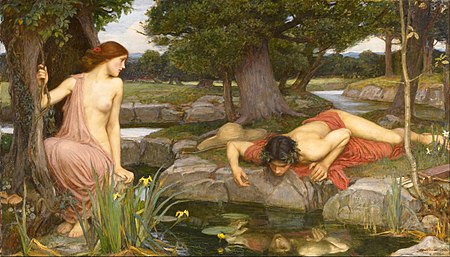Those pretty golden daffodils and their cousins, paperwhites, jonquils, and all the other members
of the narcissus family are as dangerous as they are attractive.
Sort of
like human narcissists.
All
parts of the narcissus are poisonous to humans—also to lot of animals, and even
other flowers.
The
symptoms are usually fairly minor allergic reactions like runny nose, itchy
eyes, breathing difficulties, rash and hives, but in concentrated doses they
can cause a numbness of the whole nervous system and eventually, paralysis of
the heart.
Because
of the numbing effect, the ancients used narcissi as an anesthetic for wounded
soldiers, but since dosage was unpredictable, Socrates was said to have called
them, 'Chaplet of the infernal Gods'. You might feel better, but your heart
could stop. Other cultures even believed they could cure baldness or serve as
an aphrodisiac. (Maybe for people with zombie sex fantasies?
Sounds like a
really bad idea.)
Florists can develop a kind of dermatitis they call "daffodil itch" from contact with the sap in the daffodil stems (which contain a concentration of calcium oxalate.) Doctors usually recommend a steroid cream or ointment for temporary relief, but suggest florists wear gloves to keep from re-infecting themselves.
But the most dangerous part of the plant isn't the flowers, but the bulbs. When eaten, the bulbs can cause nausea, vomiting, diarrhea, and abdominal pain as well as severe irritation of the mouth.
They are
not good for livestock, either. In the Netherlands during the Second World War,
starving cattle were fed daffodil bulbs and fatally poisoned.
Mostly people don't die of daffodil poisoning, but they do suffer severe symptoms. Daffodil poisoning generally happens when people eat the bulbs by mistake, thinking they were onions. Unfortunately, they're fast acting and you don't need to eat a lot of them to do severe damage.
_-_8.jpg/195px-A_Perfect_Pair_Daffodills_(Narcissus)_-_8.jpg) |
| Narcissus |
The UK website The Poison Garden has dozens of stories of people
poisoned by daffodils after mistaking the bulbs for onions, occasionally on
purpose.
Like the student who was so terrified he'd fail and exam that he ate a daffodil
bulb so he'd get sick during the exam and was able to re-take the exam when he
was better prepared.
And
there's the story of the daughter in law who was pleased to find a bag of
onions her mum-in-law had left, so she cooked them into a family meal. It
wasn't until after dinner she listened to her voice mail where her mother in
law asked if she'd planted the "daffs" yet, that she realized she
felt a little queasy and maybe they should all
I couldn't find any contemporary stories of people who died from eating daffodils. Mostly they just suffered a lot of unpleasant symptoms. There have been reports of dogs dying from ingesting daffodil bulbs, although this is rare.
But if
you wanted to kill off somebody who was already frail, a daffodil or two in the
stew might do the trick.
Here's a list of all the posts in the poison series
SHERWOOD, LTD: Camilla Mystery #2 (But it can be read as a stand-alone)
Ebook only $2.99!
Suddenly-homeless American manners expert Camilla Randall becomes a 21st century Maid Marian—living rough near the real Sherwood Forest with a band of outlaw English erotica publishers—led by a charming, self-styled Robin Hood who unfortunately may intend to kill her.
When Camilla is invited to publish a book of her columns with
Sherwood, Ltd. is only $2.99 in ebook at all the Amazons, iTunes, GooglePlay Scribd, 24Symbols, Inktera, Kobo, Nook, and Smashwords.
It's also available in paper from Amazon and Barnes and Noble




Always love these, Anne. I had no clue about this one. Really interesting stuff. Thank you.
ReplyDeletePatricia--This was a new one to me, too. I keep thinking I'm ready to wind this series up and then I find a bunch of new poisons I never knew about. Thanks for stopping by!
DeleteWow, I never would have guessed that daffodil bulbs were so dangerous! What an interesting series you have going on here. I'm going to go check out the other entries as well. :)
ReplyDeleteLydia--I didn't know either, until I did the research for this series. I've even kept daffodil bulbs in the fridge, because I live in a warm climate and the bulbs need to be chilled in the winter in order to bloom well in the spring. A disaster waiting to happen!
Delete